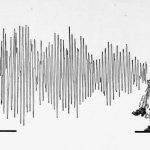How To Build Cajon Drum
Posted in Learn | Last Updated on May 1, 2020
 Used traditionally in South America for the rumba or samba music, the sound that emanates from a cajon is as unique as its fabrication. If you want to build a good cajon drum here are a few general tips to help you get started on your project. This is by no means meant to be a comprehensive guide just a few suggestion that will hopefully help you get started in the right direction.
Used traditionally in South America for the rumba or samba music, the sound that emanates from a cajon is as unique as its fabrication. If you want to build a good cajon drum here are a few general tips to help you get started on your project. This is by no means meant to be a comprehensive guide just a few suggestion that will hopefully help you get started in the right direction.
Four key suggestions on How To Build Cajon
Suggestion #1
The first thing that you need to be aware of, if you are going to build a cajon drum for yourself, is to make sure that it built solid enough so that it can withstand a lot of weight. As I am sure you are aware, this drum is designed to be played with the musician sitting on it while slapping or drumming on the front and side surfaces. This means that you need to use a hardwood, that is preferably at least ¾ of an inch in thickness to be used for the main five sides of the drum.
For these five sides, a maple or birch plywood is traditionally the wood of choice. You will find that you can purchase many different types plywood that will work just fine for the shell of the cajon. But for the actual playing surface, it is important that a high quality plywood such as hickory cherry wood is used as the material. Once you selected the type of material that will be used plywood, and determined the proper dimensions, you can cut out all the pieces and begin the assembly process.
Suggestion #2
Once you are ready to assemble the drum you can simply use wood glue to attach the initial 5-sides of box. Be sure to leave the front or playing surface off for the moment, and screw four thick pieces of wood to support both the upper sides and lower sides of the drum.
Suggestion #3
To produce the traditional snare sound for your drum, guitar strings or wires from a snare drum are good choice. Brackets can be used to hold the strings or wire to either side of the box. These strings are extremely important to the sound of the drum and so most of the care in building should be taken here. They will reverberate against the front side of the drum and so should rest on its surface as can be seen on any normal snare drum. When the process of applying the string is finished, it should be taut horizontally across the front face of the drum, with the attachments you have already put on either side using the brackets.
Suggestion #4
Before final assembly, it is important to not forget to include a sound hole on the backside of the drum, this allows for the reverberation and ensures that the cajon drum will sound and function properly. This is best done by drilling or marking how big you would like the hole to be, then simply using a hole saw to make your cut nice and even.
Suggestion #5
Once you have cut the hole for the backside, the front side of the drum should be nailed or screwed to the box and are your project should almost be finished. You will now want to make sure that the surface is properly sanded and that you have decided on what type of stain you would like to use for the finish. Last but not least do not forget to sit and test the strength of the box at all points of your cajon drum before playing. Be sure to watch the embedded video I included to help give you even a better idea of the construction process. Happy drumming!









